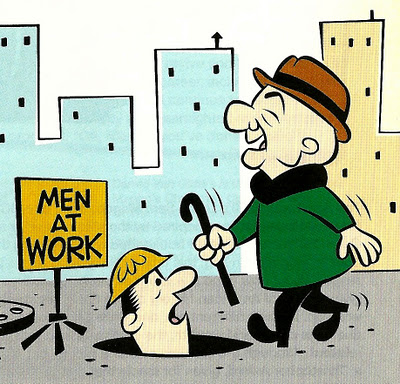by Annie | Apr 16, 2012 | Game Design
When most people think of game design, they think of the big picture. Game designers come up with the overall concept for a game – the characters, storyline, and mechanics. What many fail to realize is that game design is in the details. After the overall concept is nailed down and a prototype has been hammered out, the game designer spends countless hours fine tuning a game, making sure that every action, level, and challenge feels good and increases the amount of fun in the game. When the topic of gameplay tuning comes up, many people say that it comes down to a feeling you get when you play the game. When the feeling is right, the game is well balanced. And I agree, to a certain degree. While a big part of tuning is intangible and abstract, there are definite advantages in tying those abstractions to concrete measures. Here’s how. Set Specific Goals The most important part of tuning is to create a goal. Often, you can change a game so drastically through tuning that it can cater to completely different audiences. Thus, you must first decide on your target market and target experience. Is this a hardcore shooter for 20-year-old guys? A mind-bending puzzle game for tween girls? A social game for middle-aged folks? Setting a specific goal will help guide your tuning. As you tune, put yourself in the shoes of your target audience and see if the game has the targeted effect on you. Should the game put you on the edge of your seat? Allow you to play mindlessly? Continue over multiple days? By...
by Annie | Apr 6, 2012 | Game Design
When user interfaces are well designed, they fade into the background, a seemingly insignificant part of the overall product design. However, when interfaces are poorly designed, they can build walls that turn users away. Psychology is a major component of building intuitive interfaces. When we interact with a new interface, we bring with us cognitive baggage – all our previous cultural knowledge and expectations about how the interface should work. When we see something that looks like a button, we expect to be able to press it to instigate an action. However, if that image turns out to be unclickable, or if the action that follows is unexpected, we’re taken aback. In game design, this can sometimes be a good thing. After all, in order to create innovative products, you have to change users’ preconceived notions and expectations. However, if the experience is so foreign that it becomes frustrating, this can easily turn a user away. One of the best ways to find the hiccups in your interface design is to watch users try it out. They will naturally bring their cognitive baggage to the product, and if they’re able to use your product without having to focus on the interface, you’re well on your way to a solid design. Interested? Here are a couple of additional resources: The Design of Everyday Things Intuition, Expectations and Culture: Learning from Psychology to Build Better Game...

by Annie | Feb 23, 2012 | Game Design
Have you ever seen a game or website and thought, “Wow, that looks amazing. But what do I do?” Amidst the clutter of text or perhaps the overly minimalistic style, you as the user are at a loss for how to interact with the tool. Design is arguably one of the most interesting and creative industries out there. As a game designer, I get to make things up out of my head and then have other people play through my ideas. The downside of this creative freedom is that it’s easy to get sucked into the depths of designer myopia (i.e., nearsightedness), in which you start designing things for yourself rather than for the end user. It’s quite a common phenomenon, and we’ve all been there. I can’t count the number of times I’ve replaced text instructions with what I thought were much cleaner illustrated instructions or the times I’ve made a puzzle easier or harder to suit my personal play style. Failure to explain what I perceived to be obvious parts of my designs have often resulted in confused or frustrated users. As this Smashing Magazine article writes of web designers, “[designers] see typography and rounded corners where normal people just see websites to get stuff done on.” In other words, there’s a fine line between design and function. When designing, we need to take into account the end user’s experience, rather than focusing purely on our own design wishlists. So what do we do about it? Unfortunately, there’s no quick and easy prescription for design myopia. However, the easiest way to alleviate the issue is to continually...

by Annie | Oct 14, 2011 | Game Design
All game designers know how to play their own games. The true test is taking those games to the masses for “fresh eyes” testing, a chance to see if your game will sink or float when it’s out in open waters. We just submitted our second iOS game to the App Store today, but before we had the confidence to do so, we made sure to get in as much playtesting as possible. First, we played the heck out the game during our three weeks of development. And as this is a physical activity game, that meant we were often hopping around the office, soliciting some very curious looks. Next, we had friends and family play it. But most importantly, we made sure the game got into the hands of our target audience: kids ages 6-12. Focus groups and playtesting sessions with kids aren’t always as easy and straightforward as they may seem. Kids are different from adults. Some will tell you right off the bat that they hate your game and will identify all the elements they’d like to see improved. Others are much quieter about their opinions, and many are easily swayed by their peers. Thus, in conducting our playtesting sessions, we made sure to emphasize openness, honesty, and respect. We assured our junior playtesters that they were the experts and that we needed their help in designing the best possible game. We playtested individually to eliminate as much bias as possible, and we asked questions both in person as well as through written/artistic responses to give kids as many different avenues of expression as possible. The...


